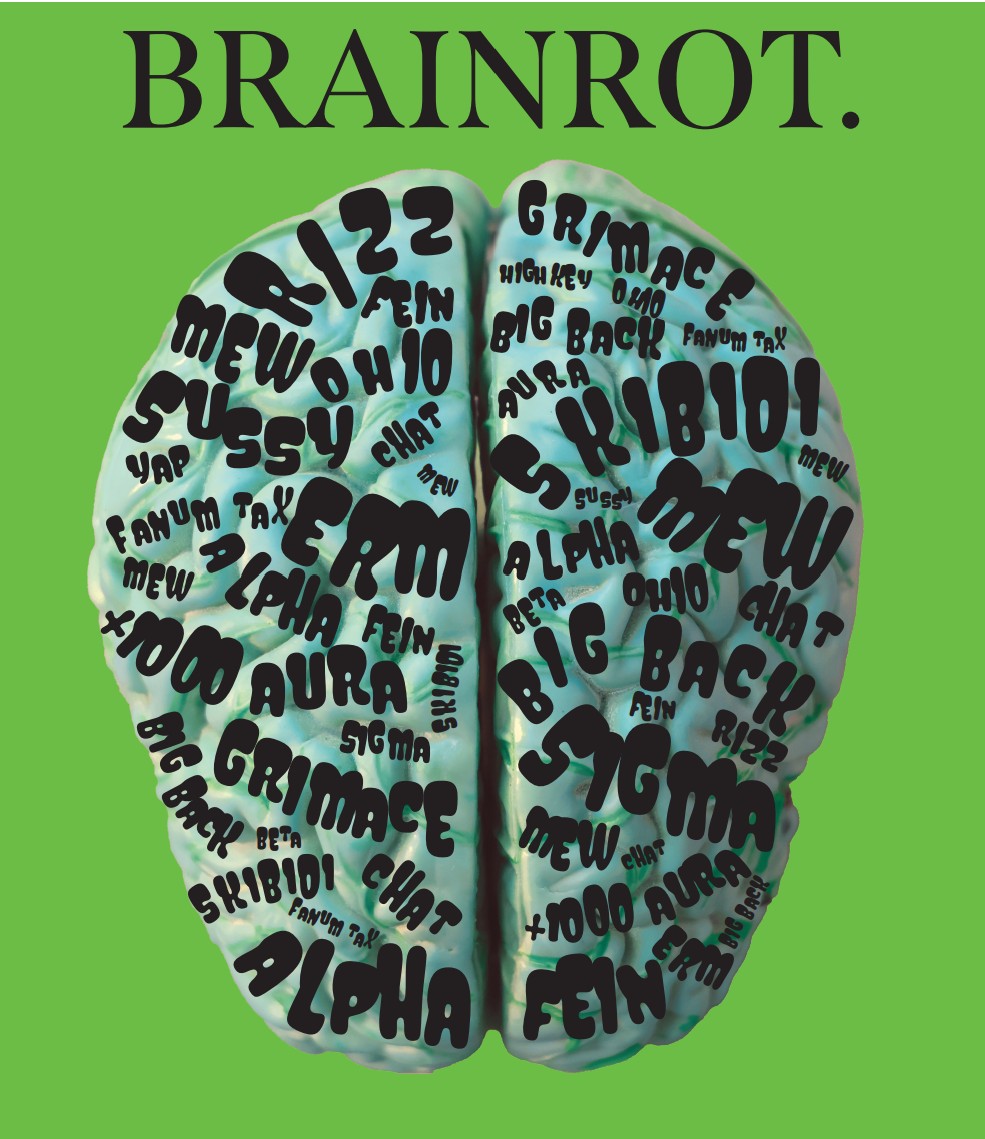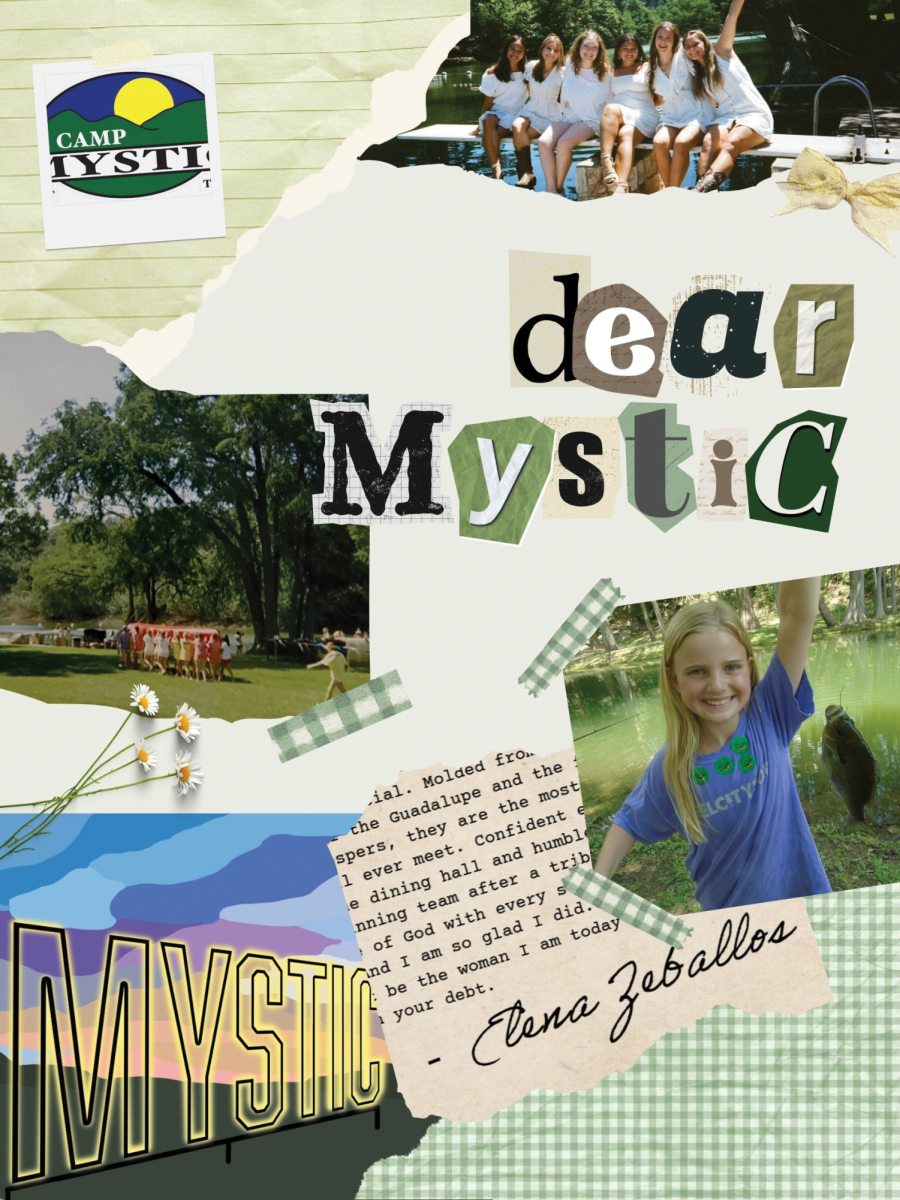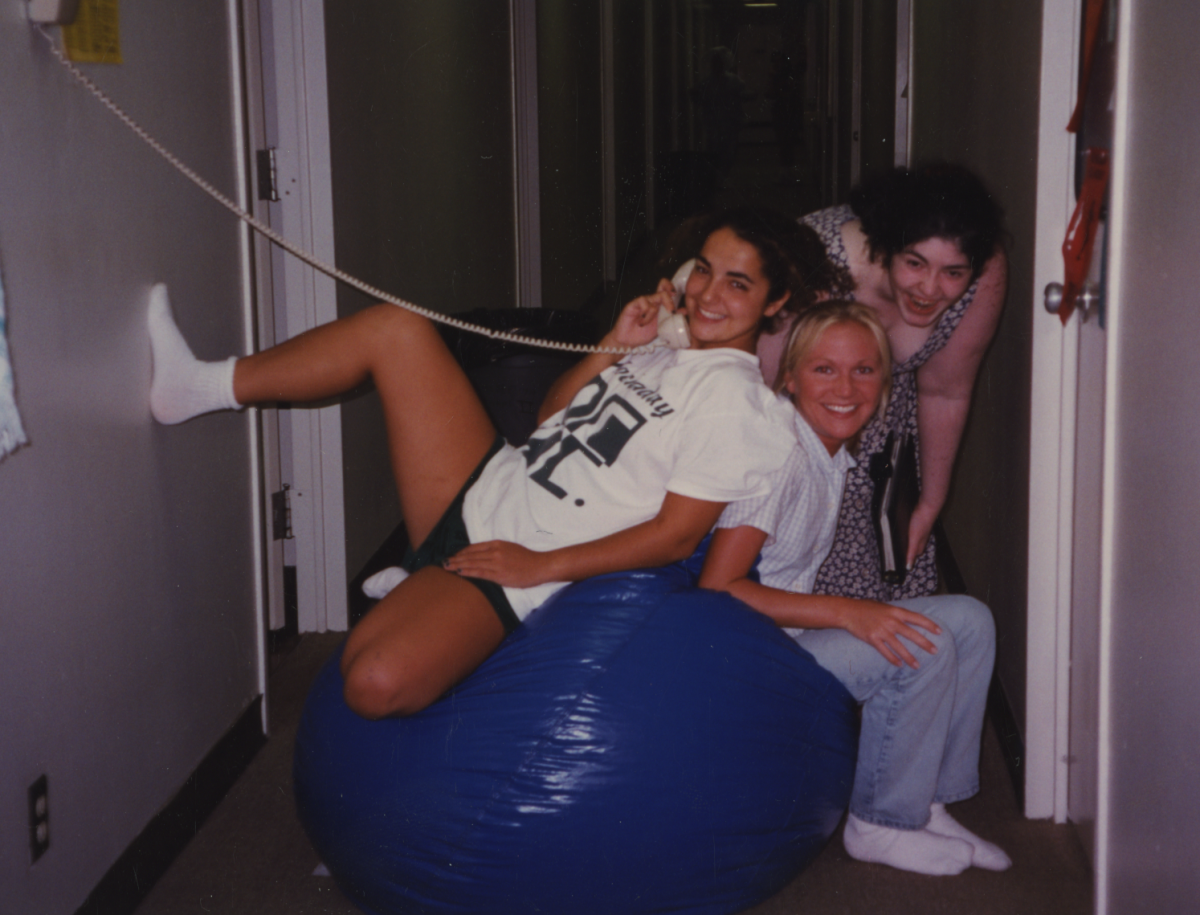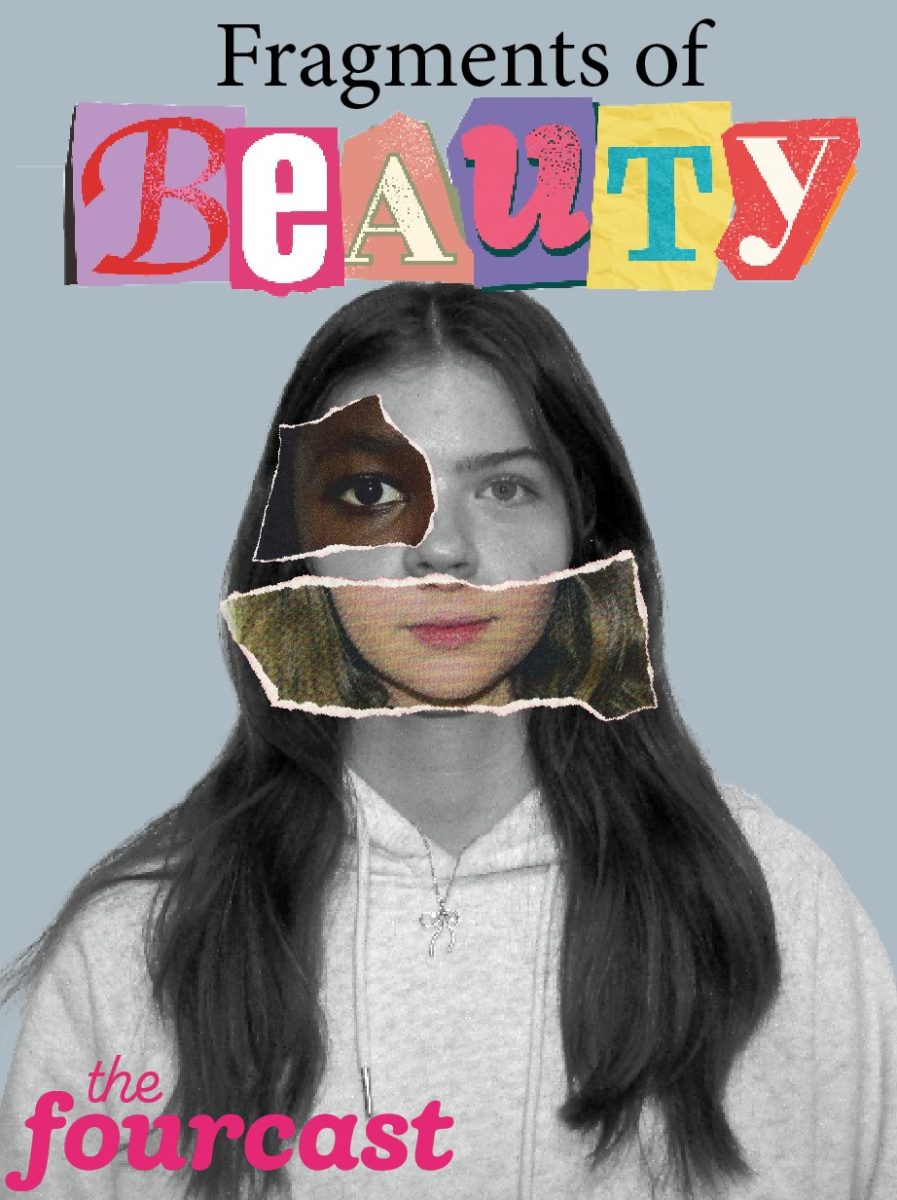GEN X
Bodacious babes and gnarly waves. The ’80s were a time of radical change in slang. In a world of evolving consumerism, slang had no choice but to evolve with it.
Back in Upper School physics teacher Dr. Stephen Balog’s high school years, he was oblivious to the popular slang of the time. However, he kept up with the politics and pop culture of the time, which heavily affected the dialect of his generation.
“The terms were all related to pop culture, music and politics at the time, even before phones existed,” Balog said. Upper School history teacher Lucio Benedetto believes that slang was heavily impacted by teenage trends of the time.
“With the rise of skateboarding in the ’80s, the word gnarly became super popular,” Benedetto said. “Soon, everything was ‘gnarly’.”
Walking into his classroom, Balog said he is bombarded by a wave of confusing and intriguing words. In a world that is constantly gaining new ways to say simple expressions, Balog is conflicted about asking his students the definitions or ignoring the confusing terms.
“If I don’t get the context of the words, then I may ask ‘is this something I should know?’” Balog said. “I’m curious why they don’t just say what they mean.”
Even though Balog feels confused by this generation’s slang, he knows that slang is a way for teenagers to connect with others.
“When you’re in that time period, it’s not slang. It’s your language,” Balog said. “It’s a way to communicate amongst your a, creating a better sense of belonging.”
Benedetto believes that slang has brought generations together throughout time.
“When I first began teaching at Hockaday, girls were always using the word ‘sketch,’” Benedetto said. “I heard it so much that even I say it now.”
Although Balog is unsure of what the future of slang will hold, he is certain that social media will ensure its constant evolution.
“Almost every year there’s a new set of language,” Balog said. “It’s going to keep growing and there will always be people coming up with new words.”
Millenials
Don’t know ’90s slang? As if! Their vocabulary was da bomb. As technological advancements continued, television shows and movies were the main source of popular slang.
Upper School English teacher Benjamin Gerdts has become famous in the senior class for implementing brainrot such as “Ohio” into his classroom.
“To me, brainrot is a confusion of language so much so that you can’t find meaning behind anything,” Gerdts said. “There’s no actual truth behind the language to hold on to because it’s all being used in so many different and contradictory ways.”
When hearing words he does not understand in his classroom, Gerdts typically laughs at the slang, sometimes resorting to lightheartedly shaming his students or advisory.
“I don’t look up slang words because I don’t want whoever is watching me on my computer to know that I’m interested,” Gerdts said. “I think it’s funny how if the older generations start using the slang of the younger generations, they move on pretty quickly.”
Gerdts has watched the slang of the ’90s evolve. He has seen numerous increments of words describing something impressive evolve over the last thirty years.
“When describing something really cool, you would say ‘the bomb,’ but eventually it evolved to ‘da bomb’ which was double cool,” Gerdts said.
Though there was no social media in the ’90s, slang was still spread through music and other pop culture. MTV’s “Total Request Live (TRL),” a television show that played the top ten music videos at the time, was extremely popular, and it influenced how teenagers spoke.
“‘TRL was huge. You would come home every day at 5 p.m. and they would play the top ten music videos of any genre,” Gerdts said. “Musicians and celebrities would say certain things and you’d be like ‘oh that slaps.’”
Gerdts believes the evolution of slang has had an overall positive impact on communication.
“Your initial reaction is probably going to be negative and confused,” Gerdts said. “Eventually, you realize it facilitates expression and builds community.”
Gerdts has noticed that some of his generation’s slang is still present while other terms have faded away. He believes this is due to popular shows such as “Friends” and “Seinfeld” which have influenced the language of both Millennials and Gen Z throughout the decades.
“If words can be worked into the lexicon through pop culture and captured in cultural artifacts like clothing, it can cement its longevity,” Gerdts said.
When thinking of the future of slang, Gerdts looks forward to seeing what the new generations will come up with.
“I think slang will grow even bolder and more inventive,” Gerdts said. “It’s fun to see what the current generation comes up with, and I believe it will be impossible for me when I’m an elderly person to be able to recognize what these words even mean.”
GEN Z
The evolution of slang eats! From “yeet” and “slay,” to “sus” and “sigma,” slang has changed tremendously for Gen Z. With the growth of social media, accessing new words has never been easier.
Senior Jordan Lacsamana cannot imagine a world without brainrot.
“Brainrot means everything to me,” Lacsamana said. “Ever since I learned about skibidi, my life has been changed for the better. It added a new adjective, noun, verb, adverb, preposition and every other part of speech into my daily vocabulary.”
Senior Cassidy Golden also uses current day brainrot such as “skibidi” and “derp.”
“I don’t even know what ‘skibidi’ means, but it rolls off the tongue nicely,” Golden said. “I love it.”
During Golden’s freshman year, “slay” was the “skibidi” of the time. Other words like “period, extra, Karen and yeet” were popular then as well. She has seen a great change in her vocabulary just over the last four years.
“I would associate ‘yeet’ with my middle school phase, and I don’t want to present myself how I did in that time period,” Golden said. “As you grow older, you don’t want to be stuck with those words.”
Golden has watched slang have a positive impact on her relationships with others in her generation, although it has a negative impact on connecting with older generations as they may not understand the terms.
“With the rise of the internet, the usage of new words has spread a lot faster,” Golden said. “There’s obviously slang for all generations and although Gen Z sticks out as being particularly weird, it’s normal for us because that’s how we talk to each other.”
Although brainrot may appear to be a silly trend from the outside, Lacsamana has seen the impact it can make.
“It’s so much more than ‘skibidi’,” Lacsamana said. “It’s a way that people bond with each other over trends on social media.”
Golden believes brainrot comes and spreads through social media.
“If someone hears something new in a video, it sparks their interest and then begins to spread,” Golden said. “People will talk about the word in the comments, then a replica of the original video with the word will be made and it will go viral.”
Junior Alice Navarro agrees with Golden that social media is constantly evolving the way that we speak.
“You’ll watch a really funny video, and a new term will come out of it, but the next day it’s already old news, and there’s a new Donatella Versace trend,” Navarro said. Navarro tends to enjoy meme culture rather than the typical brainrot that Gen Alpha initiated.
“I feel like I’m too old and wise for Gen Alpha slang, but I hope that some of these current terms stick around because they’re pretty hilarious,” Navarro said.
All three students enjoy staying in the loop of current slang and hope to see it continue to evolve in the future.
“Words are just flying in this digital age,” Golden said.
GEN Alpha
Not sure why you have L rizz? Don’t worry, because reading this section will help you gain infinite aura.
While Gen Alpha is credited with creating the majority of brainrot terms, Gen Z is also incorporating this confusing terminology into their conversations.
Whether used ironically or not, brainrot has made the conversations of teenagers harder and harder to decipher.
Many Hockaday students and teachers have heard sophomore Tari Agbeyangi saying words like “sussy” and “senpai” in the hallway. They wondered what on earth she could be talking about.
Agbenyangi is an avid social media user and gets the majority of her slang from online.
“If you hear a famous person say something, then everyone starts to say it,” Agbenyangi said. “It gets really popular.”
This new lingo is mostly derived from memes and online games that are popular among younger audiences, making it difficult for those outside of this internet culture to understand their meaning, hindering communication between the generations.
“For me, slang has a positive and negative impact on communication,” Agbenyangi said. “The word ‘sus’ has a lot of different meanings and sometimes I have to clarify if it’s good or bad, but it’s how I express myself.”
Freshman Ruby Duncan also enjoys keeping up with brainrot and incorporating words like “sigma” into her conversations. However, she sees how it can be overwhelming for adults as slang is constantly changing.
“Slang words kind of come from others, like how the word ‘sigma’ came after ‘beta’ which came from ‘alpha’,” Duncan said.
Due to the ever-changing uses of slang, brainrot words are deemed old and dated after short intervals of time and new ones emerge to replace them at an even faster rate.
“There’s lots of judgment around using old slang,” Duncan said. “I’m going to stop saying ‘sigma’ one day, but it won’t be today.”









